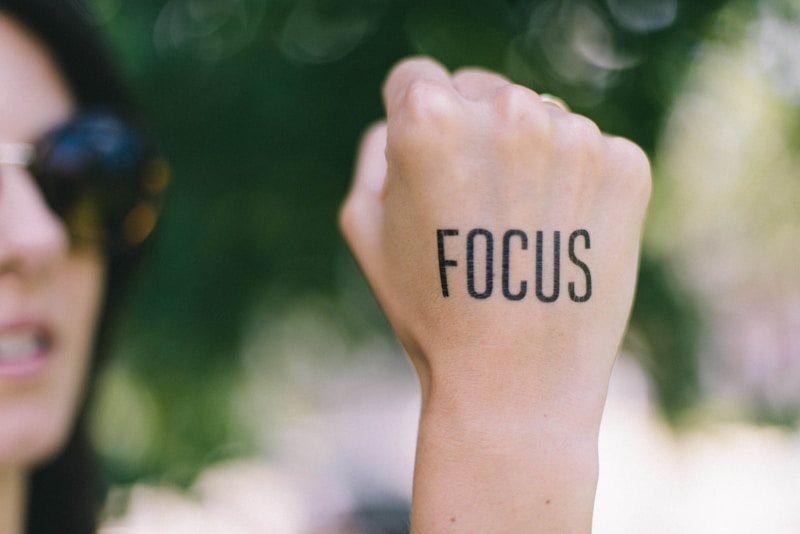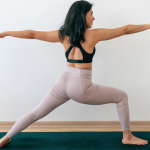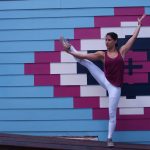Chaturanga dandasana — the pose students love to hate. Here is a whistlestop tour exploring the ins and outs of this iconic and challenging asana.
What’s the Point?
I find there is sometimes misunderstanding about what chaturanga dandasana is. We use it in our sun salutes to go from high plank to the floor, or straight into upward dog, but is chaturanga the pose half way through the flow or the whole movement? Well, since you ask, it is definitely a pose. Chaturanga dandasana is the static position often known as low plank and beautifully described by it’s Sanskrit name where chatur means ‘four’, anga means ‘limb’ and danda means ‘staff’.
Four-limbed staff pose has the body in a straight line parallel to the floor while supported on the toes and hands. The upper arms are parallel to the floor and held close alongside the torso. The elbows are at 90 degrees with the forearms upright, elbows stacked over wrists. For some this looks effortless, a good chaturanga requires considerable upper body strength and core control.
How to Teach Chaturanga Dandasana
There is so much going on in chaturanga that it sometimes feels overwhelming trying to teach it. As students concentrate on one part of the body another part often strays, leaving you feeling like you are herding cats! But having clear view of the ideal pose can really help you to give the right verbal cues. So here goes — chaturanga dandasana from the floor up:
- Feet — Hip-width apart with body weight rolled forwards into the toes. Push back through the heels.
- Hands — Chest width apart, level with the waist and fingers pointing forwards. Ground through the palm and fingers, especially on the index finger side. Placing the hands a little forwards of the shoulders in the preparatory high plank helps to get them in the right place for chaturanga.
- Torso and legs — Straight line from heels to crown of head and parallel to the floor. Cueing length in the whole body helps to achieve the dual action needed here.
- Hips and thighs — Drawn together, slightly internally rotated and lifted skywards until parallel with floor. Quadriceps working on the front of the legs to straighten the knees and psoas and glutes working together to stabilise the hips and pelvis.
- Pelvis — Neutral pelvic position the allows the spine to maintain its normal curves.
- Scapulae — Serratus anterior is working to hold the shoulder blades onto the chest wall and students should be working to draw them away from each other. Rhomboids and middle portion of trapezius work to stabilise the scapula and prevent excessive protraction. Shoulders should be drawn down away from the ears.
- Upper arms — Held alongside the chest and parallel with the floor.
- Elbows — Held at 90 degrees and stacked above the wrists, forearms upright.
- Chest — Broadening as if you are trying to make your clavicles smile. I love this cue that I read recently, it really seems to be the icing on the cake for my chaturanga.
- Bandhas — Engage mula and uddiyana bandhas to engage the core and bind the whole pose together.
Most commonly, chaturanga is entered on an exhale from high plank as in sun salutes and vinyasa. Alternatively it can be found by pushing up from the floor. This involves pushing the whole body weight up against gravity and is not for the faint of heart — it needs seriously good upper body and core strength.
What to Look Out For
With so much going on, the potential for a poorly executed chaturanga is huge. Allowing students to work with poor movement patterns brings a real risk of injury with wrists and shoulders being most vulnerable here.
Here are a few of the most common problems:
- Droopy pelvis where the pelvis sags lower than the heels and shoulders. This is usually caused by poor core strength and lack of pelvic control.
- High bottom where the pelvis is held high rather than in line with the legs and torso. Also caused by poor core strength.
- Chest dips lower than elbows often found in combination with ‘high bottom’ variant where core strength is to blame. Can also be due to lack of shoulder and arm strength.
- Winging scapulae where the shoulder blades start to stick up away from the chest like 2 little wings. This is caused by weak serratus anterior not holding the shoulder blades firmly on the chest wall.
- Elbows not at 90 degrees can be due to a lack of upper body strength, poor hand positioning or not enough forward projection of the chest entering the pose.
- Elbows flapping out. This is the body taking the path of least resistance and basically cheating. It needs lots more strength in the arms to hold the upper arms alongside the body.
Preparation and Modification
With so much that can go wrong in chaturanga, preparation work and modifications are vital. Any poses that work on core strength will benefit chaturanga so preparation with poses like high plank, side planks, down dog, warrior 3 and 3 legged dog is invaluable. Working with high and low plank variations with knees down develops the correct alignment of the body with reduced loading and is where a lot of students need to be rather than struggling with full chaturanga.
Cobra, dolphin, sphinx, down and up dog all build upper body strength and give a great opportunity to develop the correct movement patterns around the scapulae and shoulders in weaker students.
It can be hard persuading students that modifications are the way forwards but it really is best for so many. Maybe we should be thinking of chaturanga as a goal for our beginner and novice students rather than an integral part of the class — just a thought but worth a ponder. I find routine cueing to drop the knees is a really useful way of keeping students safe and injury free. It could be that you do too or maybe you could try it in your classes — experiment and see what works for you!













